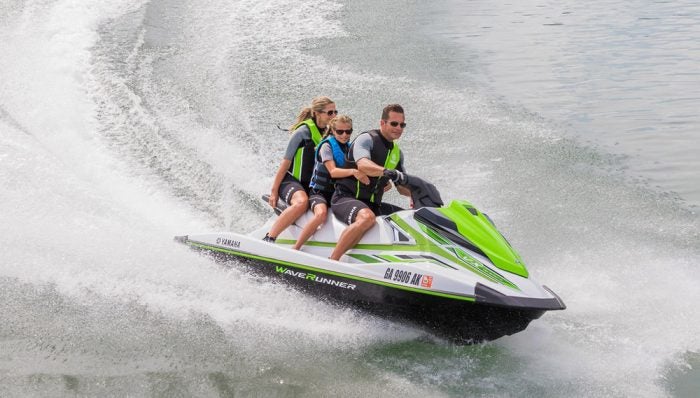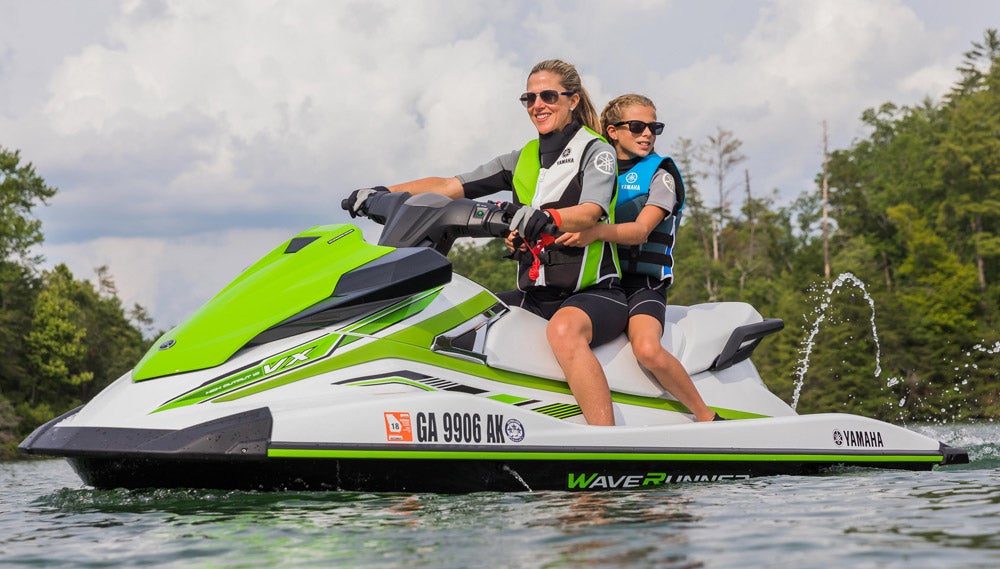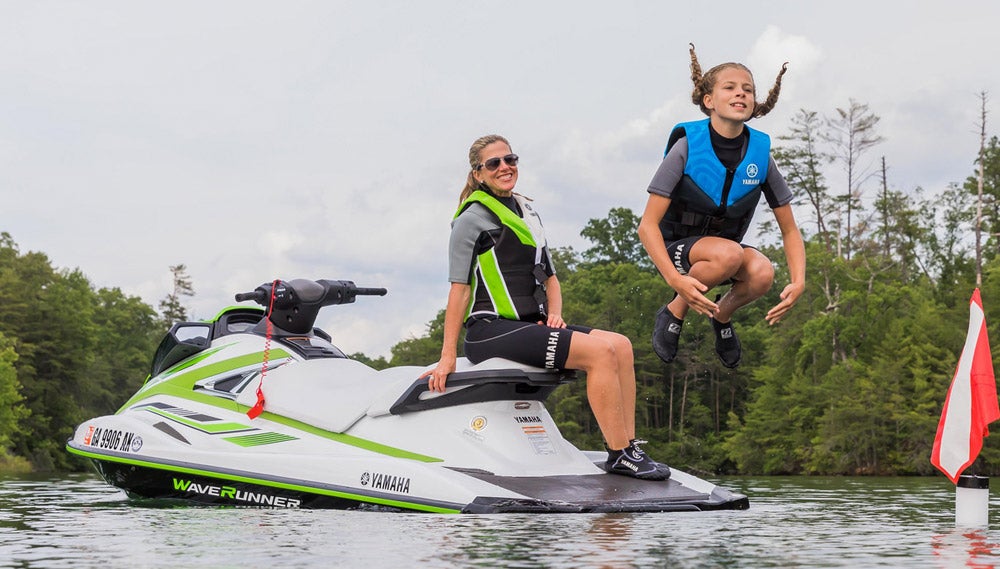2018 Yamaha VX Review
The 2018 Yamaha VX is the culmination of 13 years of VX history – a line that has dominated personal watercraft sales for many years.
Engine: Naturally aspirated, 1049cc Triple
Fuel Capacity: 18.5 gal.
Stowage Capacity: 24.6 gal.
Seating Capacity: 3
Price: $9,599
Yamaha’s VX series came on the market in 2005 as the first truly affordable four-stroke personal watercraft. As the years passed, however, the craft proved popular with more than just an introductory-minded crowd, evidenced by the fact the VX dominated sales charts for over a decade. That popularity is one of the reasons the craft rose in prominence in recent years, getting more refined in both looks and feel until it eventually settled into its current slot as Yamaha’s “recreational” offering.
Here’s why the VX has shined, and why it continues to do so all these years later – up to the current 2018 Yamaha VX we are reviewing here.
One-Two (And Three) Punch
That original four-stroke powerplant was impressive, but in recent years it begged for an upgrade. Yamaha’s replacement engine, the 1,049cc TR-1 HO that made its debut in 2016, is actually a few cubic centimeters smaller than the 1,052 MR-1 that formerly occupied the engine compartment, but it’s lighter, more compact, delivers smoothly throughout the powerband, and yes, offers more horsepower (about 13 more ponies according to the manufacturer). No, the VX still is no barnburner when it comes to speed, but in its class it splits the difference between the more powerful Kawasaki STX-15F and the newly detuned Sea-Doo GTI SE with its base 90hp engine. The mix is enough to deliver solid acceleration, cruise or do recreational towing all day long with surprisingly minimal fuel consumption, and still hit a respectable 54 mph top speed. That compact size also has the benefit of being a little easier to work on, with more room in the engine compartment.
The hull, also tweaked over the years, is well matched. It actually masters that “jack of all trades” description, proving stable enough for beginners to feel totally secure, yet aggressive enough to satisfy riders who get that occasional urge for performance riding. Slightly rounded chines allow the craft to lean smartly into turns without hesitation, and stay hooked to the water as you power through. Yet, it’s also a little bit playful. Part of that is due to the craft’s light weight, but the hull can also get a little loose if you get your weight off the stern. And yes, it’s a classic Yamaha when it comes to rough conditions. Waves don’t knock it off its track, the hull never wanders unexpectedly, and it gets from Point A to Point B with maximum efficiency. Yamaha knows that glassy water is a rarity for most riders, and the hull reflects that knowledge.
As to the deck, it’s far more stylish than that first VX, now incorporating the masculine lines from the FX — like that delta-shaped storage lid that incorporates both rearview mirrors — and far more upscale colors and graphics. This year the craft continues to get a more “fun” color combo, Pure White with Electric Green. Most riders will find the craft “fits” well, with a two-piece Cruiser-style seat that incorporates a removable dry storage container below the aft section that you can conveniently take with you when stopping at a restaurant or marina.
RiDE Headlines Feature List
The hull and ergonomics may get credit for the craft’s handling at speed, but in low-speed situations RiDE shines. Yamaha’s dual-throttle system lets one throttle handle forward motion, one handle reverse, and puts the craft into neutral when you release both. RiDE is a fast learn, extremely intuitive, and simply awesome to have when docking or negotiating a tight marina or launch ramp. At higher speeds RiDE also offers rapid deceleration the same way it works its low-speed magic, by diverting water at varying degrees and strength via the reverse bucket. Its inclusion in this base VX model is welcome, both for the peace of mind it offers the novice rider and the control it gives the experienced.
Other features of note may not be as attention-grabbing, but they’re practical and will be put to good use. Aft, there’s a spring-loaded boarding step and basic hook to handle that watersports towrope. In front of the driver, the glovebox can handle water bottles. EVA deck mats offer traction and comfort underfoot. The multifunction info center keeps tabs on the basics.
As to the immediate competition, Sea-Doo’s GTI SE ($9,599) offers more features but noticeably less power. Kawasaki’s STX-15F ($9,699) offers considerably more power, but few features. That leaves the VX in a very good position overall, a solid value craft with just enough to make it a worthy upgrade from the entry-level ranks.
Get PersonalWatercraft.com in your Inbox!
Like PersonalWatercraft.com on Facebook
Related Stories
Comments
Most Popular

2025 Yamaha JetBlaster PRO 2-Up Review

Remembering the Sea-Doo XP

2024 Kawasaki Jet Ski STX 160X Review

2017 Kawasaki Jet Ski Ultra 310LX Review

Whatever Happened to the Wetbike?

















 Your Privacy Choices
Your Privacy Choices